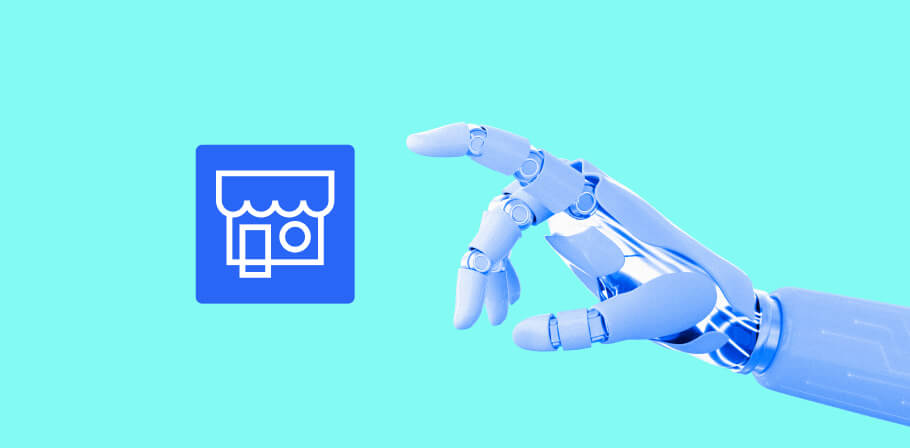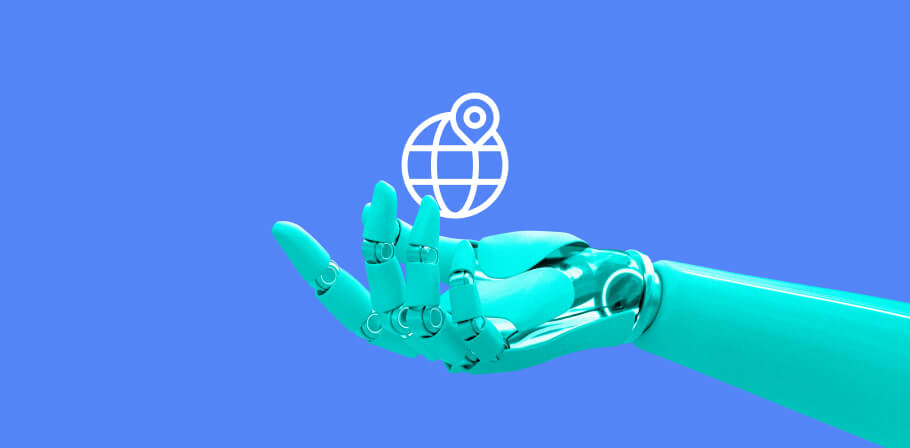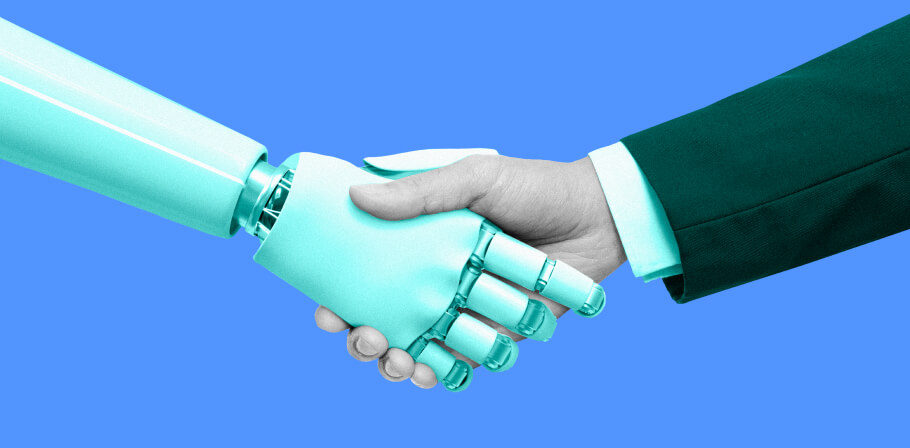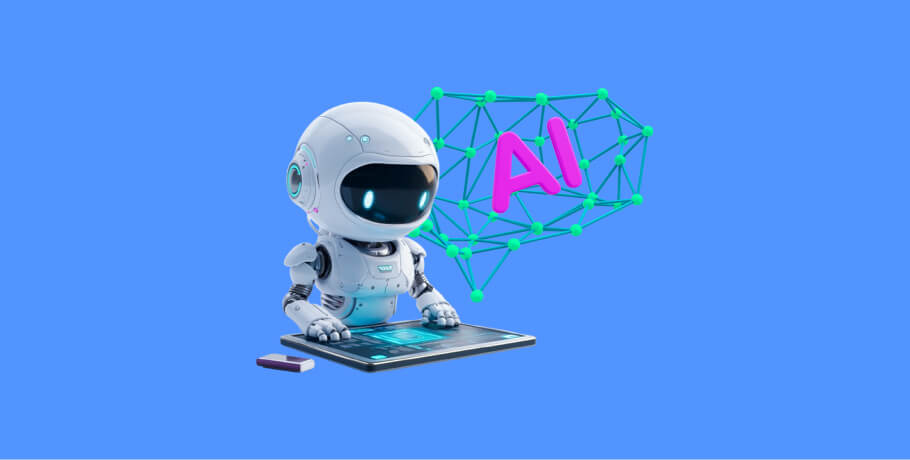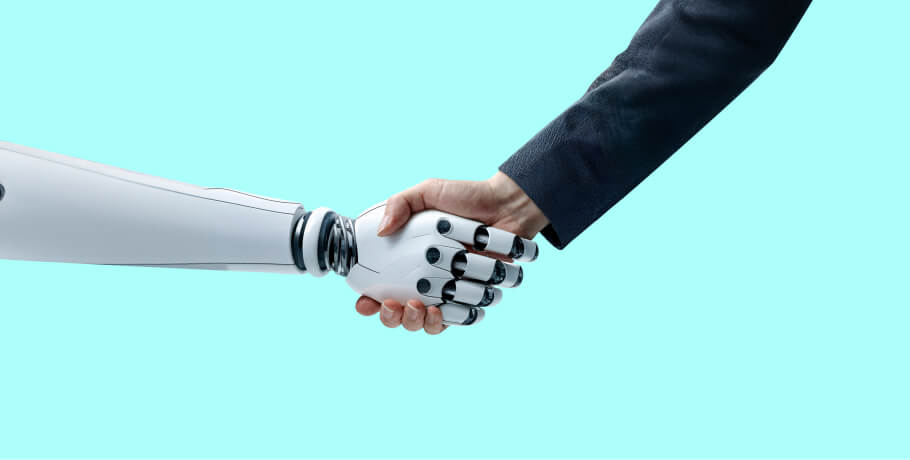Generative AI is revolutionizing the way we approach the software development lifecycle (SDLC), offering unprecedented opportunities for innovation and efficiency. By leveraging artificial intelligence (AI), automating tasks, writing high-quality test scripts, streamlining data analysis to identify patterns, and accelerating the entire development process becomes possible.
This transformative technology is not just a futuristic concept but a practical tool that is reshaping the landscape of software development, making it more agile and responsive to the needs of modern businesses. Imagine a world where software delivery is faster and involves fewer errors. Generative AI in the SDLC is making this a reality by enabling developers to focus on creative and strategic aspects while AI handles routine coding and testing tasks.
This synergy between human intelligence, AI algorithms, and machine learning is driving a new era of productivity and excellence in software development, empowering teams to deliver robust and reliable applications that meet the dynamic demands of users.
How can genAI be used in the SDLC?
A common question is, “Can genAI be used to carry out tasks across the SDLC?” Ultimately, the answer is a resounding “Yes!”
GenAI offers a multitude of applications within the software development life cycle, significantly enhancing productivity and efficiency. It enables developers to automate code generation, perform advanced bug detection, and streamline the testing phase, reducing time-to-market dramatically.
By integrating AI-supported software engineering tools, teams can expedite the entire development process from initial design to deployment. These tools assist in creating more accurate and reliable software by predicting potential issues and suggesting optimal solutions.
Additionally, AI-driven decision-making can facilitate better project management and resource allocation, ensuring that development efforts are well-coordinated and aligned with business goals. As a result, AI-supported software engineering not only boosts developer productivity and accelerates SDLC but also elevates the quality of the final product, making it more robust and user-friendly.
ADOPT GENAI FOR SOFTWARE ENGINEERING IN 12 WEEKS
Enroll in our EngX GenAI Adoption Program and see your team’s productivity soar by up to 40%.
Where can generative AI add value in the SDLC?
Improving speed and scalability
Generative AI significantly enhances development speed and scalability by automating time-consuming tasks and optimizing resource allocation. GenAI-assisted engineering allows for rapid prototyping and iterative development, reducing the time from concept to deployment.
AI-driven tools can quickly generate multiple test scenarios and code versions, identifying the most efficient and effective solutions. This capability not only accelerates the software development process but also ensures that applications can scale seamlessly to meet growing user demands.
By handling repetitive and complex tasks, generative AI frees up developers to focus on more strategic and creative aspects of their projects, allowing them to spend more time managing tasks and solving problems that genuinely require the human touch.
Supporting strategic decision-making
Generative AI supports strategic decision-making during the analysis phase and beyond by providing valuable insights and predictive analytics. Through the analysis of extensive data, AI can identify trends, potential risks, and opportunities as the software product evolves. This capability enables software developers to make informed decisions about design, architecture, and resource allocation.
By leveraging the predictive power of AI and machine learning, teams can mitigate potential issues before they arise, ensuring a smoother development process. Additionally, AI-driven tools recommend the best approaches and technologies to use, enhancing the strategic planning process and driving more successful project outcomes.
Streamlining the developer role
Generative AI streamlines the developer role by automating routine coding tasks, test cases, and more, providing intelligent assistance throughout the development cycle. AI can automate repetitive tasks during the testing phase – such as code reviews and debugging – allowing developers to focus on more complex and innovative work.
Additionally, AI-powered tools can offer real-time suggestions and corrections, helping developers write better code faster. By integrating AI, teams can maintain high standards from the software prototype through completion while accelerating the overall development process, leading to more robust and reliable software products.
Creating accurate estimations
One of the key benefits of using generative artificial intelligence is that it excels in creating accurate estimations for project timelines, resource needs, and potential costs. By analyzing historical data, past customer feedback, and current project parameters or the structured framework, AI can generate precise forecasts that help in planning and managing software development projects.
AI also enables continuous monitoring and adjustment of estimations as development processes progress, providing a dynamic approach to project management. Accurate estimations not only enhance the efficiency of deployment processes to enhance performance metrics but also improve stakeholder confidence and satisfaction with the project outcomes.
MAXIMIZE YOUR ROI WITH GENAI ADOPTION
Explore how genAI can deliver significant returns on investment by enhancing productivity, reducing costs, and improving software quality.
GenAI applications in the software development process
Planning and requirement analysis
In the planning and requirement analysis phase, generative AI plays a crucial role by providing detailed insights and predictive analytics. By analyzing historical data, customer feedback, and current market trends, AI can help identify potential challenges and opportunities early in the software development process. This allows teams to define a clear project scope, ensuring that all requirements are well-documented and understood from the outset.
AI-driven tools can also facilitate stakeholder communication, providing visualizations and simulations that make it easier to convey complex ideas and requirements. Further, AI can assist in risk assessment and mitigation planning, ensuring that projects are not only on time and within budget but also resilient to unforeseen issues. This comprehensive approach to planning and analysis sets a solid foundation for successful software development.
Designing software
Generative AI significantly enhances the software design phase by offering advanced tools for creating and optimizing designs. AI can generate multiple design alternatives, evaluating them based on performance, usability, and scalability criteria. This iterative process ensures that the final design is both robust and efficient.
Additionally, AI can help in creating detailed software prototypes, enabling teams to test and refine their ideas early in the development cycle. By simulating real-world conditions and user interactions, AI-driven prototypes provide valuable feedback that informs design decisions. This not only accelerates the design process but also improves the overall quality of the software. Essentially, integrating AI into the design phase ensures that the final product is well-aligned with user needs and business goals, leading to more successful project outcomes.
Developing software
During the software development phase, generative AI automates numerous tasks, enhancing efficiency and code quality. AI can write, review, and optimize code in various programming languages, reducing the time and effort required from developers.
By integrating AI tools, developers can identify and fix bugs more quickly, ensuring a smoother development process. Additionally, AI can facilitate continuous integration and continuous deployment (CI/CD) practices, automating testing and deployment pipelines to maintain high standards of software quality. This not only accelerates the development cycle but also minimizes errors and improves reliability.
Plus, AI-driven development tools provide intelligent suggestions and real-time feedback, helping developers to learn and adapt more rapidly. Embracing generative AI in software development transforms how teams build and deliver high-quality applications, ensuring they meet the evolving needs of users and businesses.
Software testing
Generative AI revolutionizes software testing by automating and enhancing various aspects of the testing process. AI can create test cases based on code analysis and user requirements, ensuring comprehensive coverage and reducing the likelihood of overlooked scenarios.
With AI, the test code generation becomes more efficient, allowing for quicker identification and resolution of bugs. Additionally, AI-driven testing tools can continuously learn and adapt, improving their accuracy and effectiveness over time.
By integrating genAI into the SDLC, teams can achieve higher reliability and faster turnaround times, ultimately delivering more robust software. Automated testing not only saves time but also ensures consistent and thorough validation of software, contributing significantly to the overall quality and stability of the final product.
Software deployment
Generative AI streamlines the software deployment phase by automating routine tasks and optimizing deployment strategies. AI-driven tools can manage complex deployment pipelines, ensuring that software is delivered quickly and reliably across various environments. This reduces the risk of human error and minimizes downtime during the deployment process.
Additionally, AI can analyze deployment data to predict and mitigate potential issues, ensuring a smooth transition from development to production. These capabilities make software development processes more efficient and robust, allowing teams to focus on continuous improvement and innovation. By leveraging AI for software deployment, businesses can achieve faster time-to-market and more consistent delivery of high-quality software products.
Software maintenance
The generative AI lifecycle enhances software maintenance by automating the detection and resolution of issues, ensuring that software updates are seamless and effective. AI can monitor software performance in real time, identifying anomalies and predicting potential failures before they impact users. This proactive approach allows for timely interventions and minimizes disruptions.
Additionally, AI-driven maintenance tools can suggest optimizations and improvements based on usage patterns and historical data, ensuring that software remains efficient and up-to-date. By leveraging genAI business use cases, such as predictive maintenance and automated updates, teams can reduce the workload on developers and ensure a more stable and reliable software environment. This continuous monitoring and improvement cycle significantly enhances the longevity and performance of software applications.
Possible risks of using genAI for the SDLC
While the generative AI-powered SDLC provides a competitive advantage and offers numerous benefits to the software development lifecycle, it also introduces several potential risks that must be carefully managed. One primary concern is the reliability and accuracy of AI-generated code. Although code generation can significantly speed up development, it might produce code that is not fully optimized or secure. This can lead to vulnerabilities within the software system that can be exploited by malicious actors.
Additionally, the over-reliance on AI tools may lead to skill erosion among software developers. If developers become too dependent on AI for routine tasks, their ability to write, understand, and debug code could diminish over time. This could pose a risk in situations where human intervention is crucial, such as during complex problem-solving scenarios or unexpected system failures.
Integrating the SDLC AI into the process also poses challenges when testing software. AI-generated code needs thorough validation to ensure it meets all requirements and functions correctly. This puts additional pressure on the testing team, which must develop new strategies and tools to handle AI-related intricacies. Ensuring that AI systems understand the nuances of the requirements and business logic is critical to avoid functional discrepancies in the final product.
Another significant risk involves deploying AI-integrated solutions in the production environment. Project managers must ensure that these deployments do not disrupt existing systems or introduce unforeseen issues. Continuous monitoring and rigorous testing are necessary to mitigate such risks.
Lastly, ethical considerations around the use of AI models in the SDLC must be addressed. Ensuring that AI tools adhere to ethical guidelines and do not perpetuate biases or unethical practices is crucial. Project managers and developers must work together to maintain transparency and accountability in AI applications within the SDLC, safeguarding the integrity and trustworthiness of the software development process.
The real impact of using genAI in the SDLC
The integration of generative AI in the software development lifecycle has transformed the efficiency and effectiveness of software development projects. With generative AI software development, machine learning algorithms automate numerous tasks, significantly speeding up the development process. AI can handle routine coding, bug detection, and even some aspects of testing, allowing software engineers to focus on more complex and innovative tasks. This leads to a more efficient use of resources, higher quality code, and faster project completion times.
In contrast, traditional software development without AI relies heavily on manual processes. This often results in longer development cycles, higher costs, and a greater potential for human error. Without AI, the development team must manually write, review, and test code, which can be time-consuming and prone to oversight. Additionally, project timelines can be less predictable and more susceptible to delays due to unforeseen issues or resource constraints.
Tech leaders who embrace AI can better manage risks, optimize resource allocation, and ensure more consistent delivery of high-quality software. The enhanced capabilities of AI allow for more precise estimations, proactive issue detection, and continuous improvement, making software development more agile and responsive to market demands. Overall, the real impact of using genAI when creating a software product is a substantial increase in productivity, quality, and competitiveness compared to traditional methods that are slower and less efficient.
Adopt genAI in your software development process with our EngX Program
Elevate your software development teams' efficiency by up to 42% with EPAM's EngX GenAI Adoption Program. By integrating generative AI models and sophisticated machine learning techniques, our program enables your teams to tackle complex projects effortlessly. Our genAI-powered solutions streamline the software development lifecycle, allowing your engineers to concentrate on innovation and strategic goals.
Collaborate with EPAM and commence your AI-driven engineering journey today. Our EngX Program is customized to meet your business's specific requirements, offering the tools and expertise needed to navigate the emerging technology landscapes.
With our expert guidance, your teams will unlock the full potential of generative AI, transforming your development capabilities and achieving significant productivity gains. Join us and witness the future of engineering — start your journey with the EngX Program now.
ADOPT GENAI FOR SOFTWARE ENGINEERING IN 12 WEEKS
Enroll in our EngX GenAI Adoption Program and see your team’s productivity soar by up to 40%.
Conclusion
Integrating generative AI into the software development life cycle has proven to be a game-changer, enhancing efficiency and software quality across various stages. From creating detailed software prototypes to streamlining testing, AI tools empower software developers to focus on innovation and complex problem-solving.
Ensuring security in the SDLC is paramount, and AI aids in identifying and mitigating vulnerabilities early in the process, protecting the software system from potential threats. Additionally, AI-driven insights optimize deployment strategies, ensuring smooth transitions into the production environment.
Embracing AI not only accelerates development timelines but also elevates the overall quality and security of software products, making it a vital asset in modern software engineering. As technology continues to evolve, the integration of AI will undoubtedly play a crucial role in shaping the future of software development.
FAQs

Expert digital communicator and editor providing insights and research-based guides for technology buyers globally.
Expert digital communicator and editor providing insights and research-based guides for technology buyers globally.
Explore our Editorial Policy to learn more about our standards for content creation.
read more


